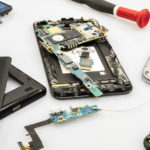In a mobile phone the battery is equivalent to the heart in the human body. As much as mobile phones are evolving, batteries are still yet to be developed.
Sure a phone can stand by even for a couple of weeks, Philips 650 is one example, but when speaking of in call battery life they sure do pale.
Older cell phones used Nickel Cadmium (NiCd) or Nickel Metal Hydride (NiMH) powered batteries which both had their disadvantages. Among them were “memory effect” and the heavy metal used in the production process. The “memory effect” is the voltage depression of the mobile phone’s battery. In other words, if you do not completely discharge the battery before recharging it, after a number of cycles the battery remembers the low level at which it was charged and from that point forward it acts like it was discharged. NiCd batteries suffered more than NiMh ones from the “memory effect”.
Nowadays the mobile phones are powered only by Lithium Ion (Li-Ion) or by Lithium Polymer (Li-Poly). The first is currently the most used type of battery for cell phones. Compared to NiCd and NiMh powered batteries, the Li-Ion ones are lighter and they don’t suffer from the “memory effect”. They do have one major disadvantage, they have an irreversibly yearly loss of approximately 18%-20% of their capacity.
It seems that the future in mobile phone industry consist of the Lithium Polymer batteries. The Li-Poly batteries have a greater lifecycle than Li-Ion and they also have a 20% higher energy density. Though they cost somewhat more than Li-Ion ones, Lithium Polymer batteries seem to be the next choice of mobile phone manufacturers, and with increased production cost will eventually go down.
Article Source: http://EzineArticles.com/450775






